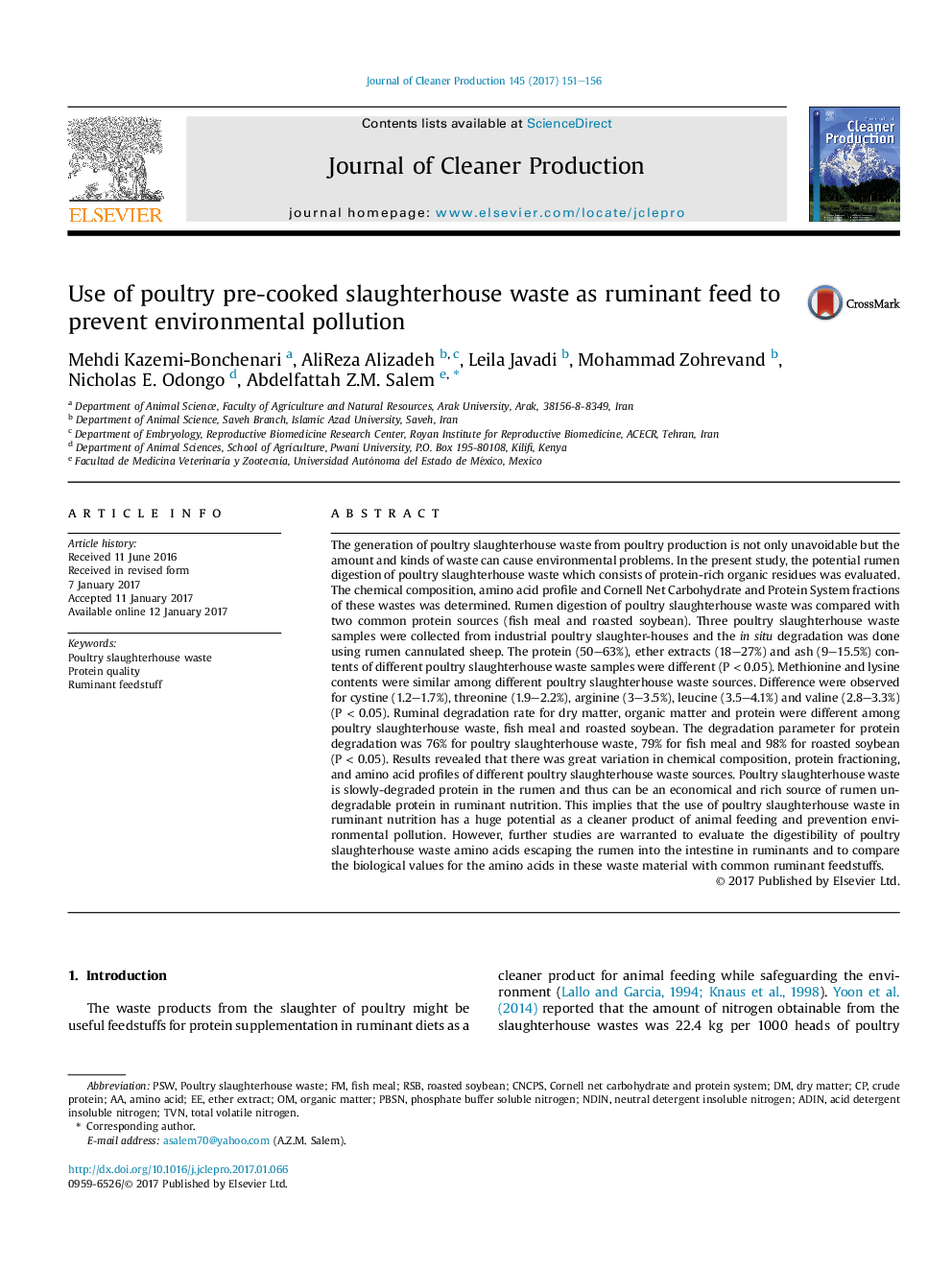| Article ID | Journal | Published Year | Pages | File Type |
|---|---|---|---|---|
| 5481609 | Journal of Cleaner Production | 2017 | 6 Pages |
Abstract
The generation of poultry slaughterhouse waste from poultry production is not only unavoidable but the amount and kinds of waste can cause environmental problems. In the present study, the potential rumen digestion of poultry slaughterhouse waste which consists of protein-rich organic residues was evaluated. The chemical composition, amino acid profile and Cornell Net Carbohydrate and Protein System fractions of these wastes was determined. Rumen digestion of poultry slaughterhouse waste was compared with two common protein sources (fish meal and roasted soybean). Three poultry slaughterhouse waste samples were collected from industrial poultry slaughter-houses and the in situ degradation was done using rumen cannulated sheep. The protein (50-63%), ether extracts (18-27%) and ash (9-15.5%) contents of different poultry slaughterhouse waste samples were different (PÂ <Â 0.05). Methionine and lysine contents were similar among different poultry slaughterhouse waste sources. Difference were observed for cystine (1.2-1.7%), threonine (1.9-2.2%), arginine (3-3.5%), leucine (3.5-4.1%) and valine (2.8-3.3%) (PÂ <Â 0.05). Ruminal degradation rate for dry matter, organic matter and protein were different among poultry slaughterhouse waste, fish meal and roasted soybean. The degradation parameter for protein degradation was 76% for poultry slaughterhouse waste, 79% for fish meal and 98% for roasted soybean (PÂ <Â 0.05). Results revealed that there was great variation in chemical composition, protein fractioning, and amino acid profiles of different poultry slaughterhouse waste sources. Poultry slaughterhouse waste is slowly-degraded protein in the rumen and thus can be an economical and rich source of rumen un-degradable protein in ruminant nutrition. This implies that the use of poultry slaughterhouse waste in ruminant nutrition has a huge potential as a cleaner product of animal feeding and prevention environmental pollution. However, further studies are warranted to evaluate the digestibility of poultry slaughterhouse waste amino acids escaping the rumen into the intestine in ruminants and to compare the biological values for the amino acids in these waste material with common ruminant feedstuffs.
Keywords
Related Topics
Physical Sciences and Engineering
Energy
Renewable Energy, Sustainability and the Environment
Authors
Mehdi Kazemi-Bonchenari, AliReza Alizadeh, Leila Javadi, Mohammad Zohrevand, Nicholas E. Odongo, Abdelfattah Z.M. Salem,
